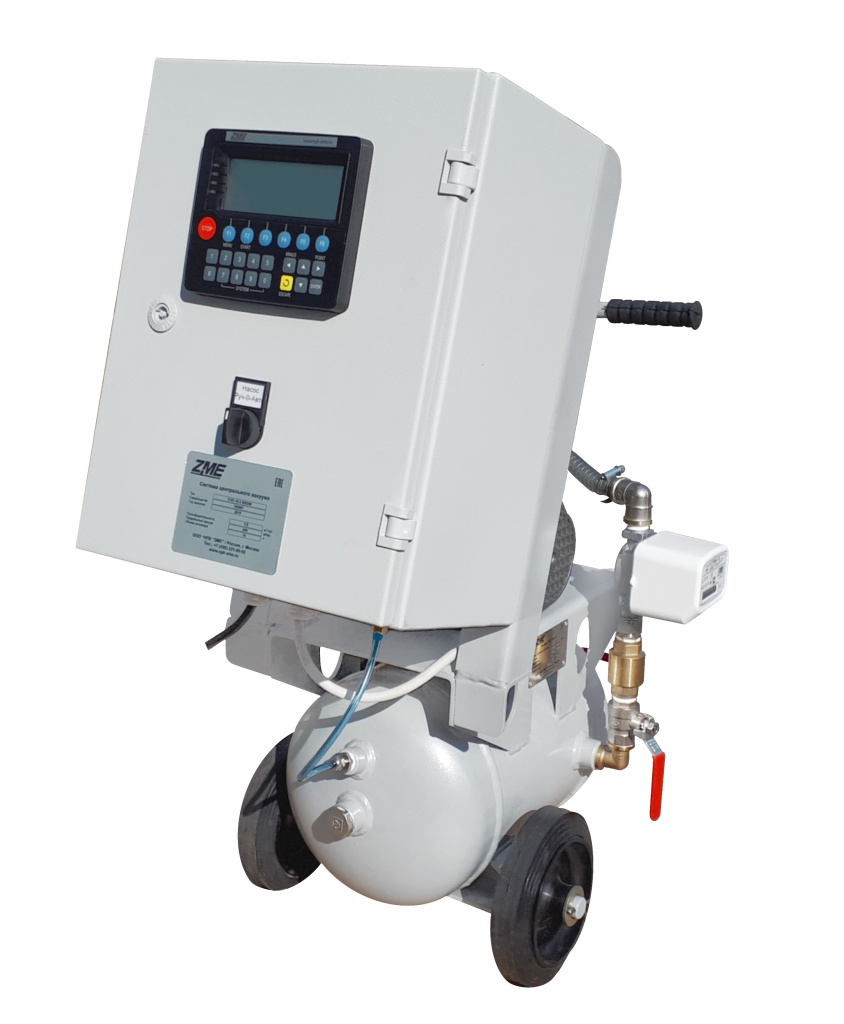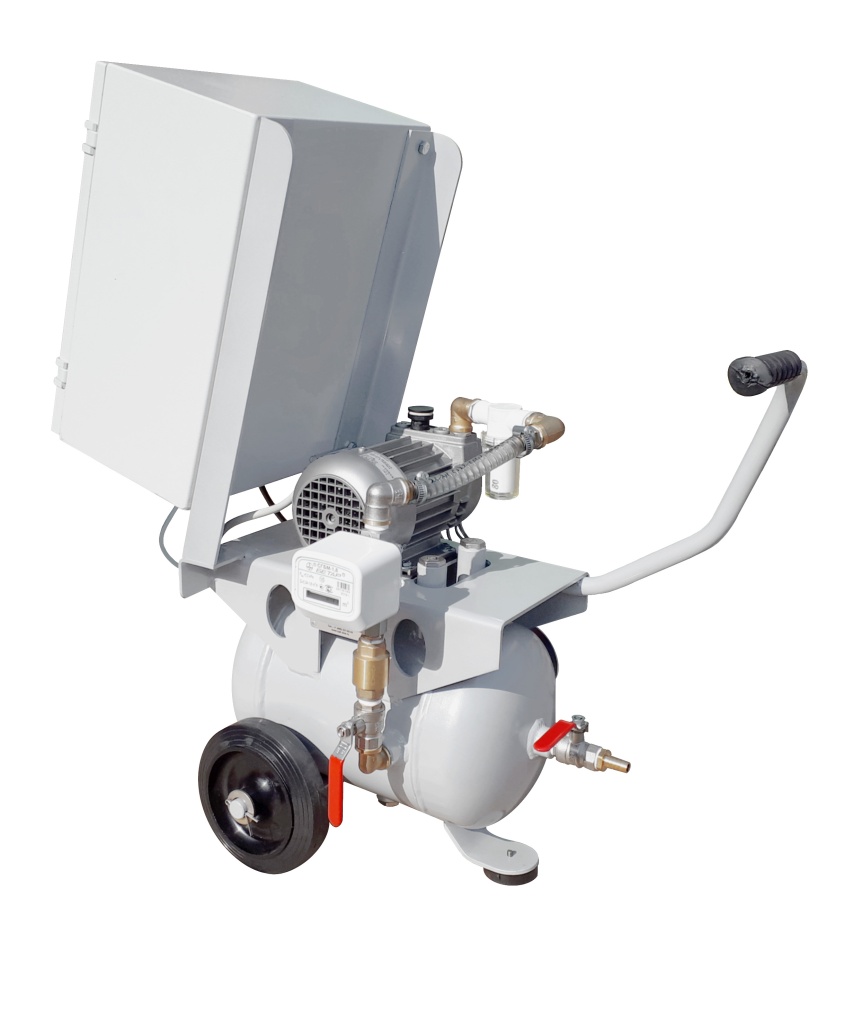|
Leak testing of systems
One of the unheralded but very necessary applications for vacuum pumps is the pre-evacuation and leak testing of hydraulic brake systems in new cars.
Before filling with brake fluid, the volume of the brake master cylinder and connecting brake lines (hoses and tubing) to the wheel brakes (including calipers of disc brakes and wheel cylinders of drum brakes) must be evacuated to remove air and moisture. The total volume being evacuated is normally less than a liter and the target pressure is normally 1 to 2 mm Hg Abs as measured at the master cylinder. The pressure can translate to less than 5 mm Hg at the rear brakes due to conductance limitations of the connecting hoses and the limited pumping time available. Two types of leak tests are normally conducted to insure leak tightness. One is normally referred to as the dynamic leak test which simply uses diagnostic equipment to monitor the pump-down pressure versus time during evacuation and compare to a typical pump-down curve to catch any large discrepancy in the pressure being too high. This could be the result of the vacuum quick disconnect leaking or blockage in the brake hoses that can interfere with a successful evacuation. The system would halt the test to save time, alarm, and identify the high-pressure problem before back-filling ever occurred.
The second type of leak test is referred to as the static leak test where after attaining the target pressure of 1 to 2 mm Hg Abs the vacuum pump is valved off from the brake volume and the rate of rise of pressure due to inleakage and outgassing versus time is measured and must be below a specified level based upon past qualification testing.
After the brake volume has been evacuated to the target pressure and met, the leak integrity tests the braking system volume is filled with pre-evacuated brake fluid that has been pumped on to deaerate it of gas bubbles which can cause spongy brake pedal action and lead to braking problems and/ or failure. In the past when the brake systems were composed of all metal, filling pressures of up to 400 to 500 psig were used to quickly backfill the systems. With the introduction of plastic master brake cylinders filling pressures of 100 to 150 psig are used. Most brake fluids (DOT 3, 4, and 5.1) are composed of a glycol-ether compound with corrosion inhibitor additives although silicone-based (DOT 5) and castor oil-based (DOT 2) are available. The brake fluid selected needs to meet certain quality standards to perform correctly such as a high dry boiling point (free of water) of 200 to 260°C and a wet boiling point (containing a prescribed amount of water) of 140 to 180°C depending upon the DOT requirement to avoid vaporizing during operation at elevated temperatures which could lead to spongy brakes due to too much vapor in the system. The brake fluid should have a low level of compressibility with varying temperatures, a high viscosity index to limit the change in viscosity with temperature, and be noncorrosive to common metals whether dry or wetted with water. Since most of the brake fluids are based upon a glycol-ether base they are completely miscible with water and are hygroscopic and will absorb water from the humidity in the air so that exposure should be limited. The brake fluid used for the fill is pre-evacuated to avoid air bubbles and moisture from entering the brake system. Since it is completely miscible with water any brake fluid spills can be easily cleaned up with water. Contact of the brake fluid with painted surfaces should be avoided since it will remove paint.
|
|


|
